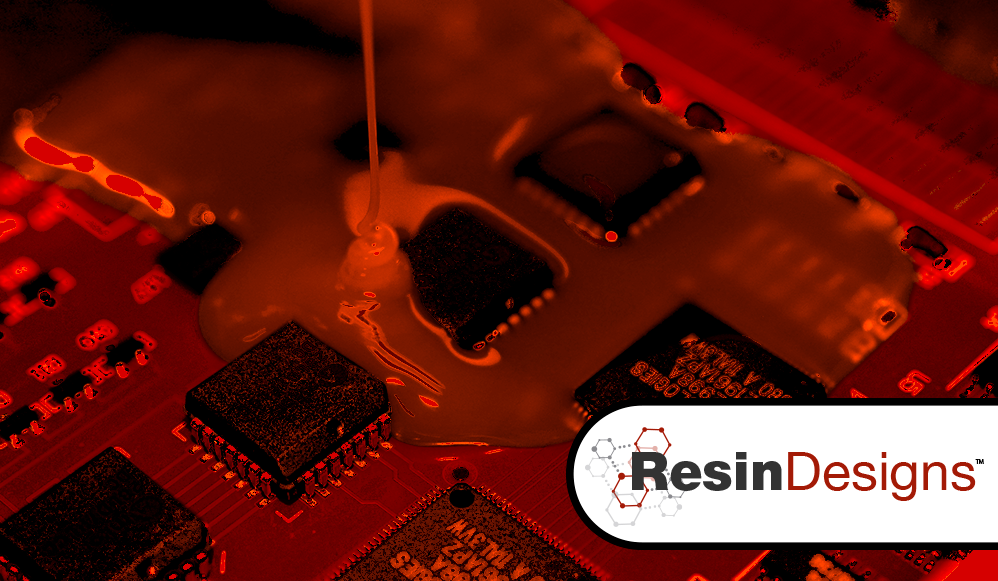 Two-component epoxies are versatile, viable adhesives and encapsulants that have demonstrated their value in the manufacture of electronics, medical devices, aerospace components, and many others. They provide superb electrical and mechanical properties along with the ability to resist extreme environments such as high and low temperatures and chemical exposure.
Two-component epoxies are versatile, viable adhesives and encapsulants that have demonstrated their value in the manufacture of electronics, medical devices, aerospace components, and many others. They provide superb electrical and mechanical properties along with the ability to resist extreme environments such as high and low temperatures and chemical exposure.
As part of our commitment to industry and customer support, we believe that our experience with two-component epoxies can be of value to manufacturers faced with certain processing and troubleshooting issues. While far from a comprehensive guide, we present below two common issues experienced when working with epoxies, as well as some tips on how to fix them.
1. Slow or Incomplete Hardening and Curing
Common Causes
A. Improper Mix Ratio
This is probably the most common error in the use of two-component epoxies due to the precise nature with which the mix ratio must be followed in order to balance the reaction and assure no reactants remain. The use of additional hardener will not result in a faster cure. Double check all weight and volume measurements as well as pump speeds and strokes on automated systems.
B. Low Ambient/Atmospheric Temperature
Epoxy reaction rate is affected by temperature, with warmer temperatures generally resulting in faster cures and vice versa. For colder plant or atmospheric conditions, be sure to allow extra curing time, since the reaction will occur more slowly. Adding heat will allow the chemical reaction to be maintained or even sped up. If your application requires regular low temperature application, it may be necessary to utilize a hardener that cures at low temperatures.
C. Inadequate Mixing
Two-component epoxy materials require an efficient and homogeneous mixing of components for the reaction to proceed to completion. Pockets of component materials that are not exposed equally to their counterparts will remain uncured and soft. Both manual and automated mixing are OK. Ten to twenty minutes of blending are advised for a uniform mixture and to avoid cavitation and the introduction of air and bubbles.
D. Use of Wrong Product/Components
Epoxies and their various components are rarely interchangeable; consequently, it is critical that the correct components are used. When issues arise, a first step toward a solution is simply to confirm that the correct materials were used in the first place.
E. Attempting to Cure Large or Excessive Volumes
The speed at which epoxies cure is dependent upon a number of factors including temperature as noted above. It is also directly correlated with the mass and volume that are being applied and attempted to be hardened or cured. Cure times are generally quoted for a given volume; exceeding them will slow the cure substantially. At times, excessive volumes can even make it impossible to completely cure through the material.
2. Bond and/or Adhesive Failure
Common Causes
A. Excessively Porous Substrates
A common issue with all adhesives is inadequate coating on the surface. In the case of porous substrates, the epoxy adhesive can fill voids and recesses and leave inadequate coating thickness on the surface available for bonding. There are two solutions: apply more volume of adhesive or apply an initial coating to fill the voids and a second coating for adhesion properties.
B. Substrate Surface Contamination
In order for any epoxy adhesive to bond two surfaces, it is necessary that they are free of contaminants that could inhibit the bonding process. Most commonly, these contaminants take the form of plasticizing agents in plastics blooming to the surface, oils and waxes from human handling, and basic dirt and dust. The solution is incoming inspection and control of substrate quality and cleaning prior to adhesive application.
C. Inadequate Bond Area
Again true for all adhesives, it is necessary that there be a large enough area coated with adhesive to bond the two substrates. For parts that are larger or heavier, the surface area coated must be larger as well to provide the necessary strength and avoid failures.
D. Excessive Bonding or Laminating Pressure
The bonding of two surfaces always requires static weight, clamping pressure, or dynamic pressure often in the form of rollers in continuous processes. Too little pressure will potentially leave voids or air entrapment, while excessive pressure will constrict and thin the bond line too much. If pressure is excessive in bonding, adhesive can be squeezed out of the bonding area and result in failure.
Resin Designs™, a division of Chase Corporation, employs a team of highly qualified polymer scientists. These professionals have created and designed epoxies for a range of standard applications. They also stand ready to collaborate to design custom formulations for the most challenging of needs. These products provide superior adhesion to metals, ceramics, rubbers, glass and plastics.
Please contact us today to discuss your application.







